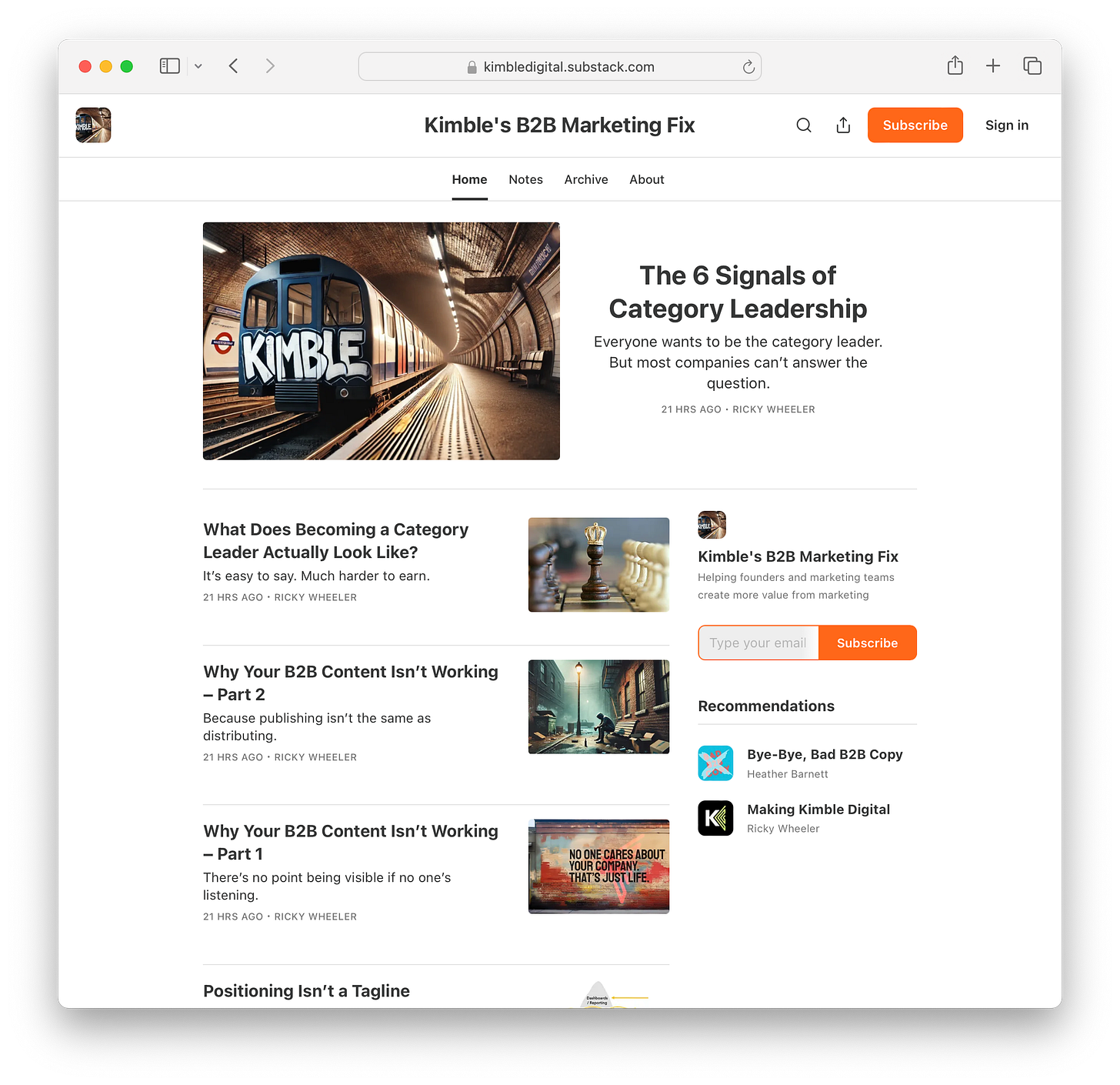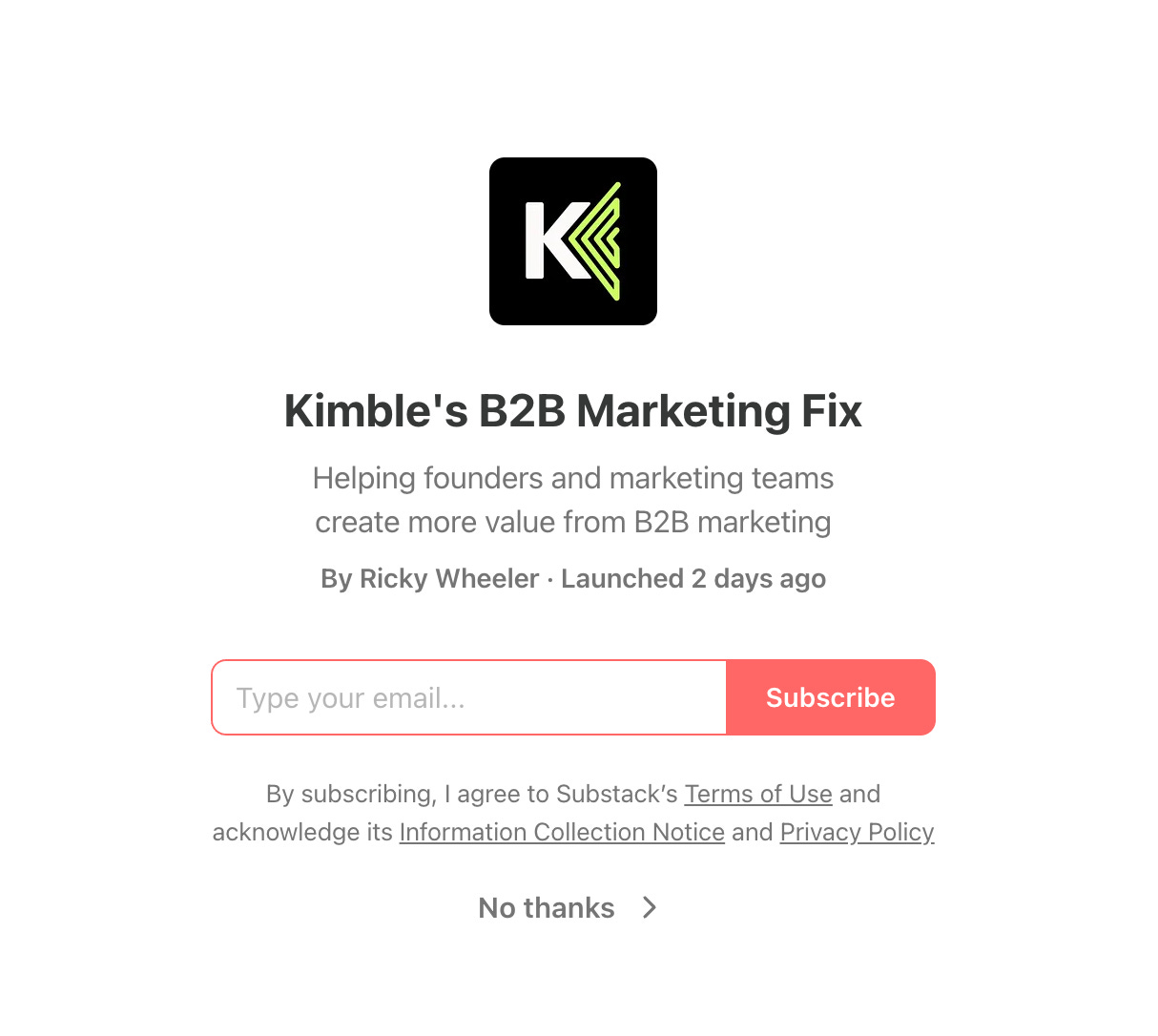Early Mistake: Launching Two Substack Blogs
If you're serious about orchestrated, sales-led marketing, you need control. Total control.
So here we are. I’m in the thick of launching. And I’ve not really talked about the strategy behind my content setup before.
I went in with a plan: two blogs.
Blog 1: The Obvious One
This is the outward-facing, high-intent content. It asks questions, hits real buyer pains, and positions me as someone who can actually help.
It’s the demand gen engine. The content that earns attention and opens doors.
I named it “Kimble’s B2B Marketing Fix”
Articles include:
Blog 2: The Behind-the-Scenes One
This is the one I was most excited and anxious about (and the series you are reading now).
This one would talk openly about how I’m building the Kimble brand from scratch. What I’m doing. Why I’m doing it. How it works.
Articles include:
Building the Kimble Brand: Fonts, Feel, and Finding the Right Fit
How We’re Targeting Smarter (Before Spending a Penny on Ads)
The idea? To let people watch me do the work they might hire me for. Not theoretical advice. Actual execution. In real time.
Its called “Making Kimble Digital”
Why Substack?
I’ve done the Medium thing. The LinkedIn thing. The traditional blog thing.
Then I saw two creators I rate using Substack, and I noticed a few things I liked:
Slick Subscribe Flow: Easy to join. Smooth experience.
Auto Newsletters: Every post sent straight to inbox. No faff.
Monetisation (Maybe): Nice to know you can flip the switch if things take off.
So, I got to work. Wrote five or six solid pieces for Making Kimble Digital. The behind-the-scenes stuff was happening anyway — so why not turn it into a valuable content layer?
It made sense.
This publication was born.
Here’s Where I Went Wrong
I assumed the same setup would work for Kimble’s B2B Marketing Fix — my top-of-funnel, buyer-facing blog.
So I did the same.
Wrote five or six solid pieces of content for that. Published (although only shared amongst a few close friends).
But suddenly Substack stopped making sense.
I was gating my top-of-funnel content.
If I send a prospect a link to my blog, the first thing they see is this:
“Subscribe to keep reading”
Even if they can skip it — it’s a moment of friction. A barrier.
For Making Kimble Digital, that’s fine. It’s a tribe play. You should subscribe if you want to get free advice like this ☺️
But for The B2B Marketing Fix? The one doing the real commercial lifting?
That friction kills the funnel.
Then There Was Tracking…
If you’re going to build something epic — you need to track as many signals from your ICP as possible.
It is therefore critical to have tracking.
But Substack doesn’t let you install custom tracking scripts to that degree.
And when you’re running cold outreach or building campaigns, you need those signals — to kick off actions.
Website visits? Big one.
Google conversion pixels and UTM tracking? Useful.
Email sequences tied to clicks and reads? Essential.
Substack can’t handle that.
Importance of Owned Media
People need to go down a funnel. See the next step. Do the thing.
So, if you're serious about orchestrated, sales-led marketing?
You need control. Total control.
And that means building content on your own turf.



